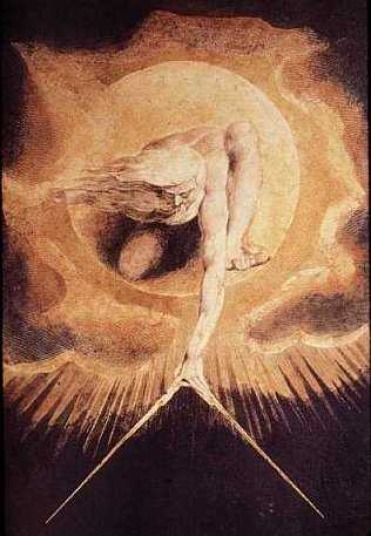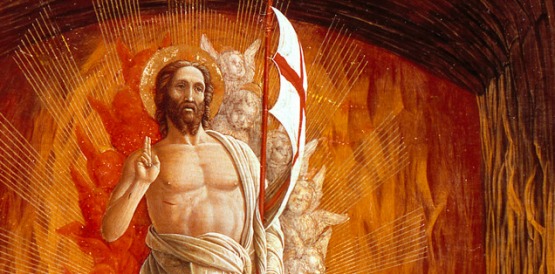The story of the Matrix’s creation has strong parallels with the Gnostic creation myth. The Matrix’s world represents the Gnostic’s view of the material world, and both the creator of the material world and the Matrix are portrayed negatively. Also, how one is liberated from the Matrix reflects the Gnostic idea of gnosis.
Gnosticism was a religious system that flourished for many centuries at the beginning of the Common Era. Although Gnostic Christianity consisted of many sects, Gnosticism as a whole accepts a myth that explains the true nature of the universe and humanity’s proper state of existence in it (Flannery-Dailey and Wagner ¶5). Gnostics believe there is a supreme god who is completely perfect, pure, holy and immaculate (Flannery-Dailey and Wagner ¶6). He resides in the pleroma, which is similar to heaven, with other lesser divine beings named “aeon“ (Flannery-Dailey and Wagner ¶6). Each of those lesser divine beings possesses a metaphorical gender of male or female (Flannery-Dailey and Wagner ¶6). A pair of male and female of these beings are able to produce offspring who are also divine emanations (Flannery-Dailey and Wagner ¶6). One female aeon named “Sophia”, which means wisdom in Greek, decided to produce an offspring on her own without the permission of her male companion (Flannery-Dailey and Wagner 6). The ancients believe that fathers contribute form to their offspring, so without her male companion, Sophia’s offspring was malformed (Flannery-Dailey and Wagner ¶6). This offspring, who was sometimes known as “Yaldaboath” meaning “child of chaos” in Aramaic (Pearson 47), was cast away from the pleroma by Sophia, and into a separate region of the cosmos (Flannery-Dailey and Wagner ¶6). This deity is ignorant, and is recognized by the Gnostics as God from the Old Testament. Yaldabaoth believes himself to be God, so he created archons (angels), the world, and humans (Flannery-Dailey and Wagner ¶7). When he created humans, he breathed the divine spark that dwelled inside of him into them (Flannery-Dailey and Wagner ¶7). This caused the good divine spirit to be trapped in the bad material body (Flannery-Dailey and Wagner ¶7). Thus, the human spirits are in exile from their true home, the pleroma. However, the real God sent Christ to spread “gnosis” or knowledge, so humans can receive salvation. This gnosis involves the understanding of humans’ true nature and origin. If one comprehends the gnosis, then at death he or she can escape from the prison of the material world and into the pleroma. Like humans, Christ was also imprisoned in ignorance and “needed to be awakened to his own divinity before he could help awaken others” (Godawa 1). The Gnostics states, “He [Christ] who was redeemed, in turn redeemed others” (Gospel of Philip 2.3.71). Like Sophia, in the Matrix universe, humans created artificial intelligence, which will later create the Matrix, out of pride. In the first Matrix movie, Morpheus explains to Neo that “early in the 21st century, all of mankind was united in celebration. We marvelled at our own magnificence as we gave birth to A.I.” Like Yaldabaoth, A.I. is malformed because it is a matter without spirit (Flannery-Dailey and Wagner ¶9). A.I., represented by the Architect in the second and third movies, created an entire race of machines, similar to Yaldabaoth’s creation of archons, and the Matrix, used to trap humanity in a illusory material world. Humans are confined in a prison that does not represent ultimate reality, akin to the Gnostic belief that human spirits are trapped in the bad material body. Similar to the Gnostic Christ, Neo was awakened by taking the red pill offered by Morpheus, before he can free humans from the Matrix by passing on the secret knowledge about the true nature of reality to them.
Gnosticism was a religious system that flourished for many centuries at the beginning of the Common Era. Although Gnostic Christianity consisted of many sects, Gnosticism as a whole accepts a myth that explains the true nature of the universe and humanity’s proper state of existence in it (Flannery-Dailey and Wagner ¶5). Gnostics believe there is a supreme god who is completely perfect, pure, holy and immaculate (Flannery-Dailey and Wagner ¶6). He resides in the pleroma, which is similar to heaven, with other lesser divine beings named “aeon“ (Flannery-Dailey and Wagner ¶6). Each of those lesser divine beings possesses a metaphorical gender of male or female (Flannery-Dailey and Wagner ¶6). A pair of male and female of these beings are able to produce offspring who are also divine emanations (Flannery-Dailey and Wagner ¶6). One female aeon named “Sophia”, which means wisdom in Greek, decided to produce an offspring on her own without the permission of her male companion (Flannery-Dailey and Wagner 6). The ancients believe that fathers contribute form to their offspring, so without her male companion, Sophia’s offspring was malformed (Flannery-Dailey and Wagner ¶6). This offspring, who was sometimes known as “Yaldaboath” meaning “child of chaos” in Aramaic (Pearson 47), was cast away from the pleroma by Sophia, and into a separate region of the cosmos (Flannery-Dailey and Wagner ¶6). This deity is ignorant, and is recognized by the Gnostics as God from the Old Testament. Yaldabaoth believes himself to be God, so he created archons (angels), the world, and humans (Flannery-Dailey and Wagner ¶7). When he created humans, he breathed the divine spark that dwelled inside of him into them (Flannery-Dailey and Wagner ¶7). This caused the good divine spirit to be trapped in the bad material body (Flannery-Dailey and Wagner ¶7). Thus, the human spirits are in exile from their true home, the pleroma. However, the real God sent Christ to spread “gnosis” or knowledge, so humans can receive salvation. This gnosis involves the understanding of humans’ true nature and origin. If one comprehends the gnosis, then at death he or she can escape from the prison of the material world and into the pleroma. Like humans, Christ was also imprisoned in ignorance and “needed to be awakened to his own divinity before he could help awaken others” (Godawa 1). The Gnostics states, “He [Christ] who was redeemed, in turn redeemed others” (Gospel of Philip 2.3.71). Like Sophia, in the Matrix universe, humans created artificial intelligence, which will later create the Matrix, out of pride. In the first Matrix movie, Morpheus explains to Neo that “early in the 21st century, all of mankind was united in celebration. We marvelled at our own magnificence as we gave birth to A.I.” Like Yaldabaoth, A.I. is malformed because it is a matter without spirit (Flannery-Dailey and Wagner ¶9). A.I., represented by the Architect in the second and third movies, created an entire race of machines, similar to Yaldabaoth’s creation of archons, and the Matrix, used to trap humanity in a illusory material world. Humans are confined in a prison that does not represent ultimate reality, akin to the Gnostic belief that human spirits are trapped in the bad material body. Similar to the Gnostic Christ, Neo was awakened by taking the red pill offered by Morpheus, before he can free humans from the Matrix by passing on the secret knowledge about the true nature of reality to them.


